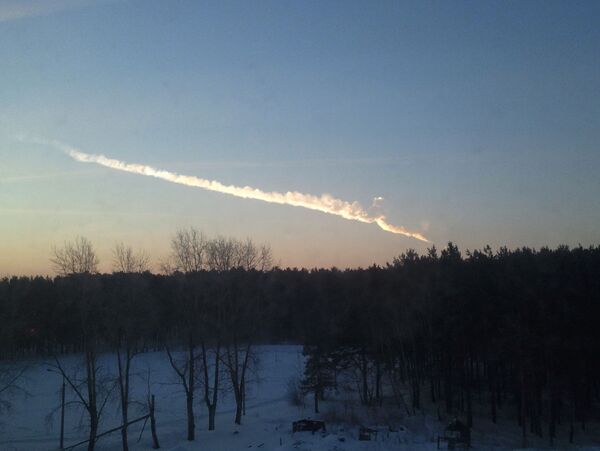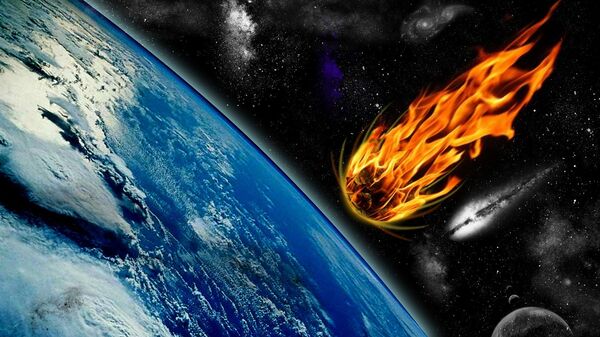Russian scientists are researching technologies which could allow humanity to counteract the threat of dangerous space rocks, Igor Bakaras, head of the Information and Analytical Center for Ensuring the Safety of Space Activities in Near-Earth Outer Space at Rosocosmos’s TsNIIMash rocket and spacecraft scientific center, has said.
According to the official, the research includes a variety of proposals on how to destroy or change the orbit of threatening celestial objects, including work involving the concept of kinetic impact, using satellites to move an asteroid out of a dangerous trajectory by using a method known as ‘gravitational tug’, and the use of various technological solutions for these purposes, including rocket engines and solar sails.
“At present, work in these areas is limited largely to theoretical research and the mathematical modelling of various countermeasures,” Bakaras explained.
According to the official, the technical implementation of these measures is currently hampered by the lack of accurate data on the characteristics celestial bodies and their movement, structure and physical and chemical properties.
In addition to these efforts, Roscosmos is working to create a new Russian Centre for Small Celestial Bodies, charged with detecting and tracking of celestial bodies, including space dust, meteors, comets and asteroids approaching Earth. The centre will interact with Roscosmos, the Russian Academy of Sciences, Russia’s Emergencies Ministry and the Foreign Ministry. It will also exchange information with foreign governments and international organisations.
The new monitoring system will be created by consolidating existing monitoring systems and capacities into a single network, including the so-called Automated Warning System for Dangerous Situations in Near-Earth Outer Space.
Meteor Strikes Take Place More Often Than Most People Think
According to Barakas, although potentially hazardous asteroid flybys are a regular occurrence, those which are actually capable of destroying human civilisation as we know it befall Earth only once every 100 million years or so, with the 10 km-wide asteroid which struck the planet 65 million years ago which is believed to have wiped out the dinosaurs being an example.
“In the entire history of the existence of modern man (about 100,000 years), there have been no such collisions,” the official noted.
At the same time, Barakas pointed out that an asteroid with a diameter of 1 km across, which would be enough to cause a global catastrophe and leave an impact crater of about 20 km, strikes the planet once every million years or so.
Even asteroids with a diameter of just 100 meters across can cause major devastation, including a 2 km-wide blast crater, or tsunamis which could threaten coastal cities if they land in the ocean. Such events take place every three thousand years or so. As for smaller space rocks (15-20 meters in diameter), such as the so-called Chelyabinsk meteor, which struck the Russian region of Chelyabinsk in 2013, these enter Earth’s atmosphere approximately once every thirty years.

Russian scientists have studied a broad range of options for combating the threat of errant asteroids over the past decades, including a proposal to use converted intercontinental ballistic missiles.
However, earlier this year, a comprehensive study by the department of mechanical engineering at Johns Hopkins University studying the physics of asteroid collisions revealed that it may actually be a lot more difficult to carry out the destruction of large space rocks than previously believed.




